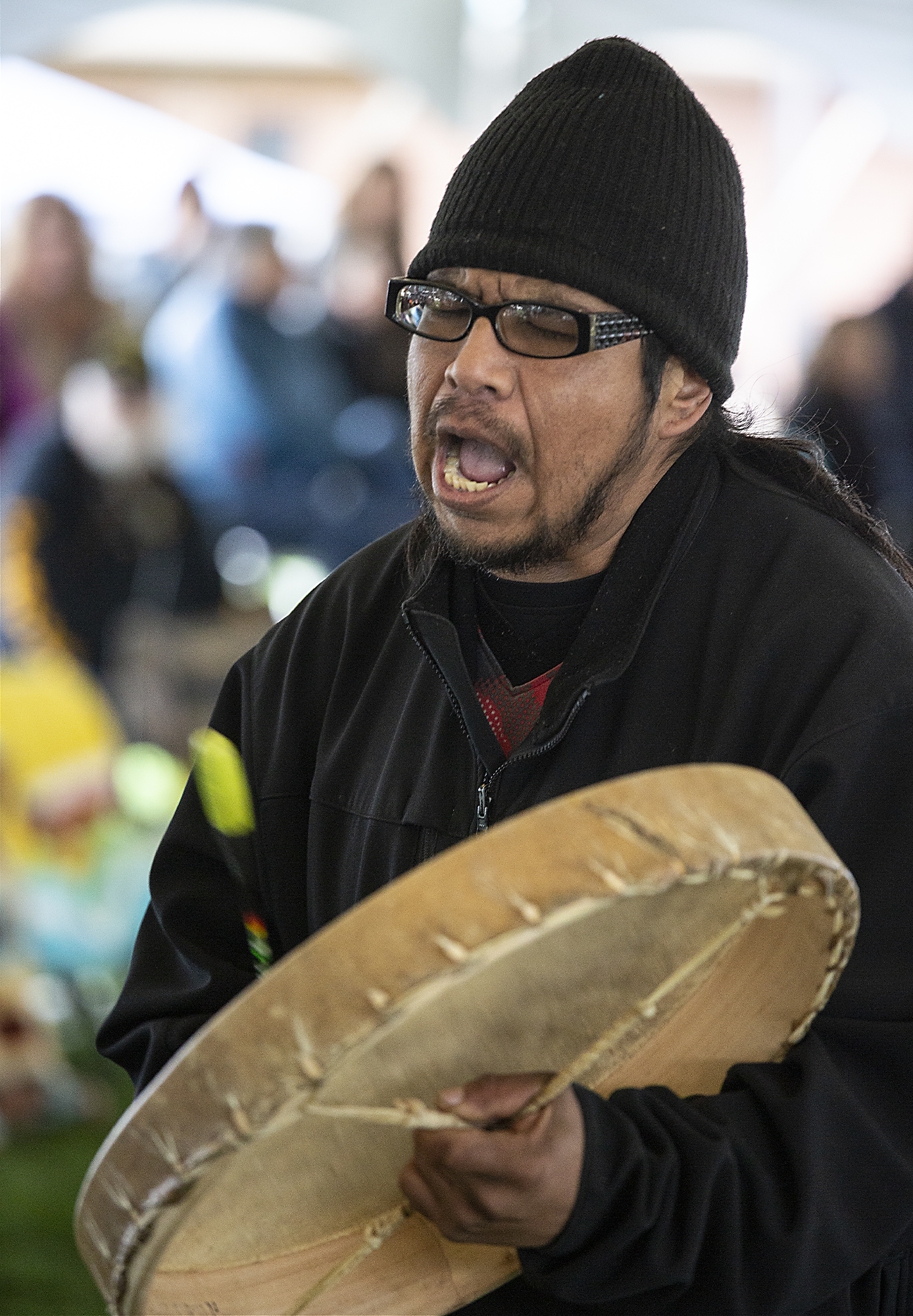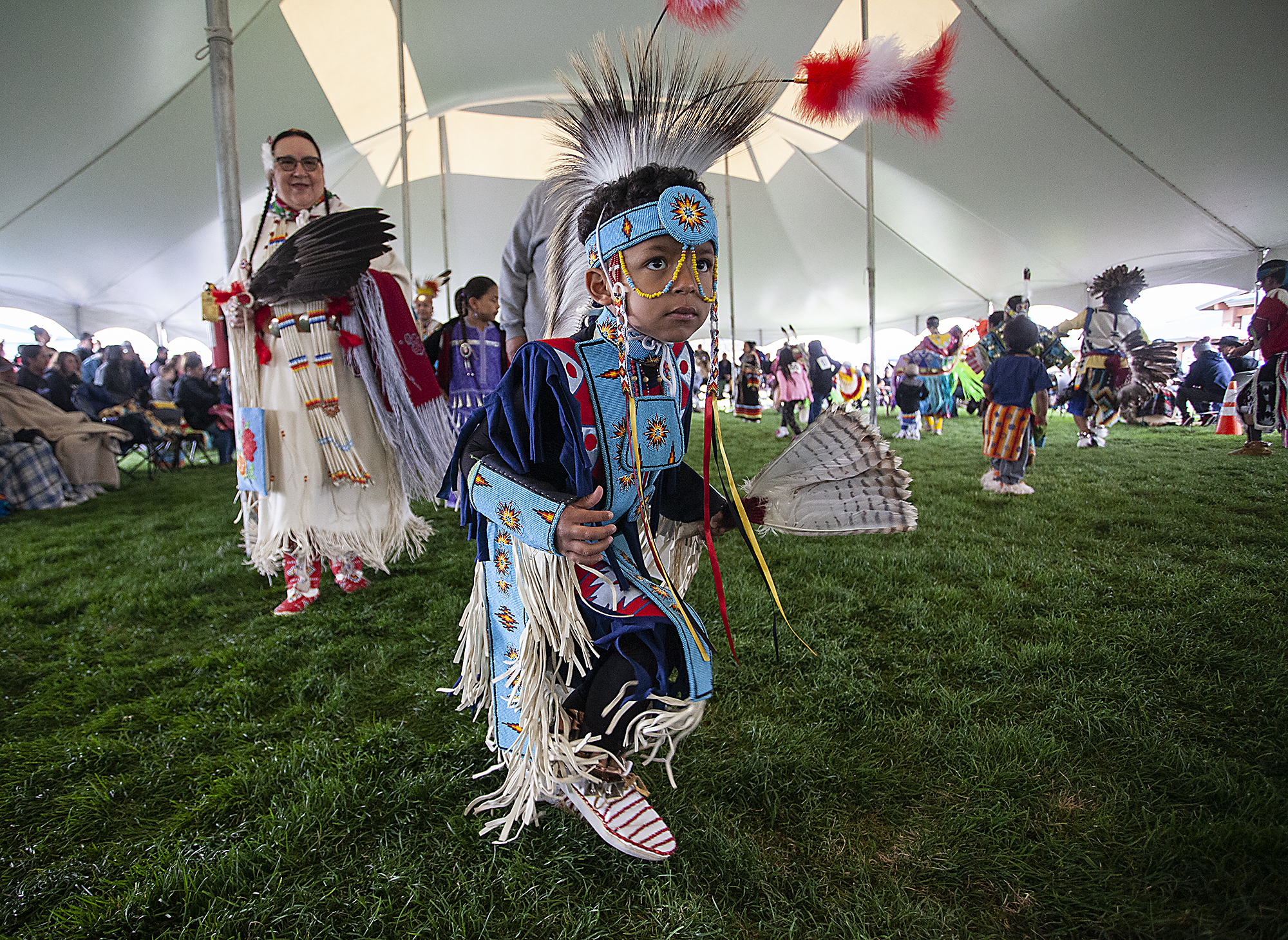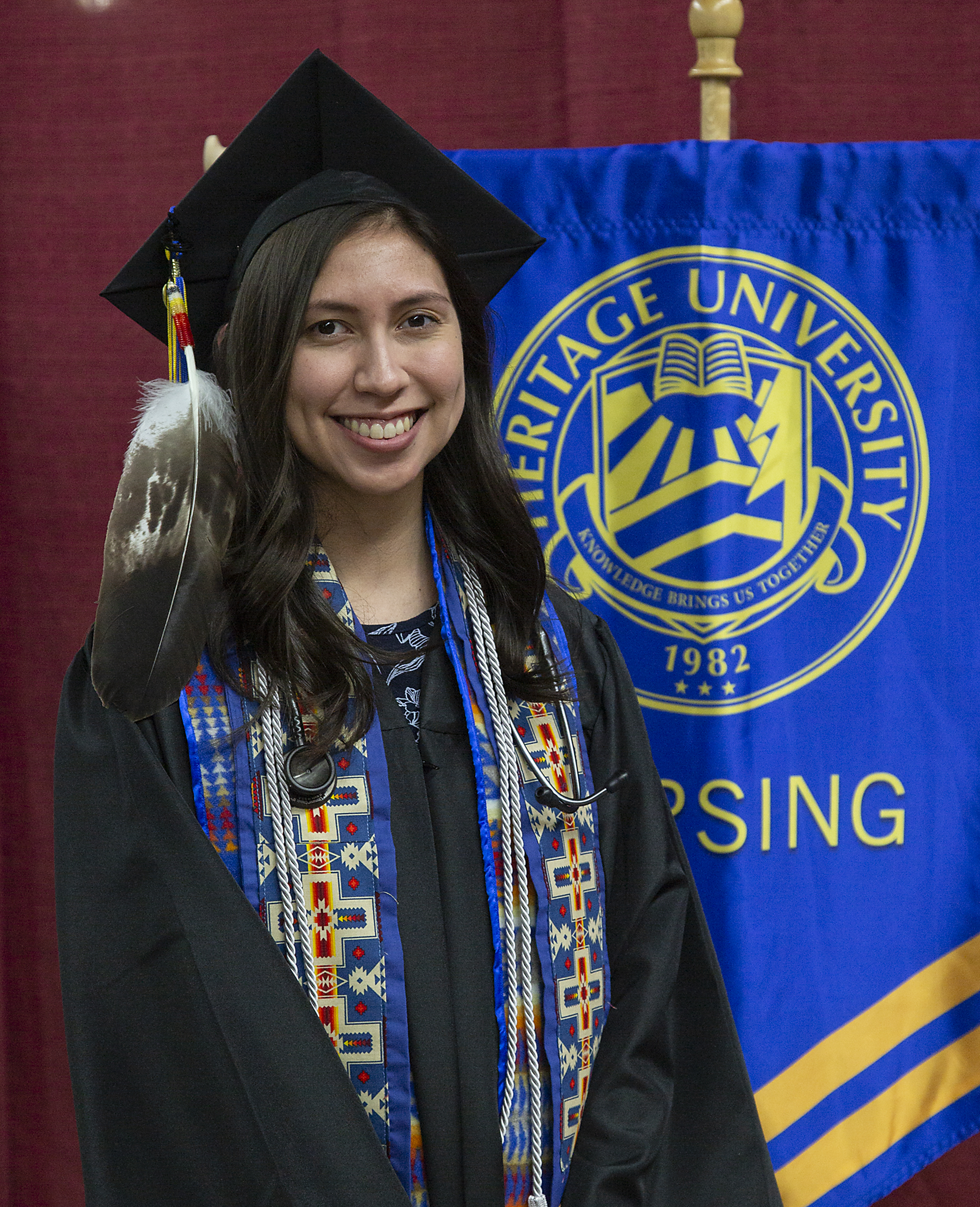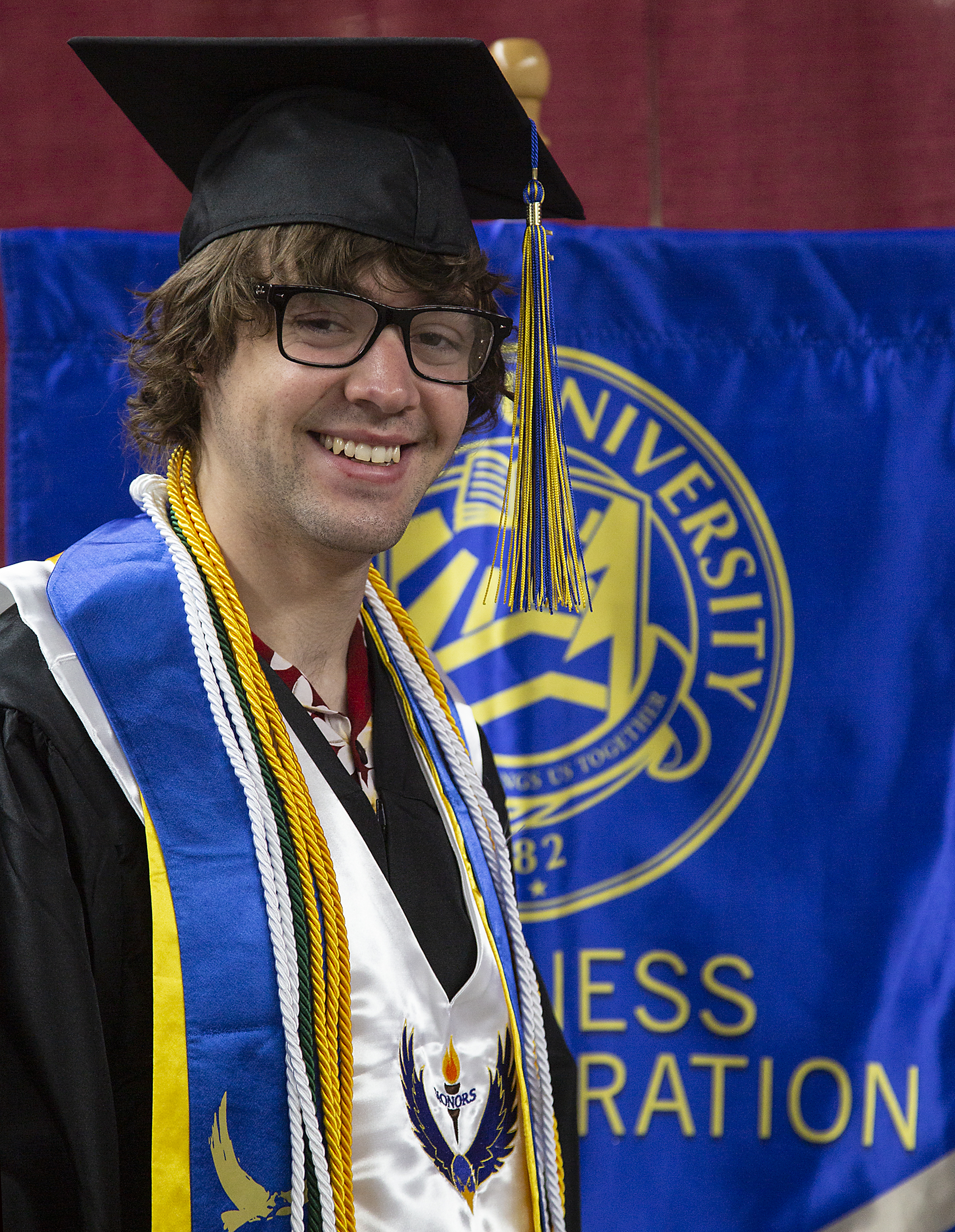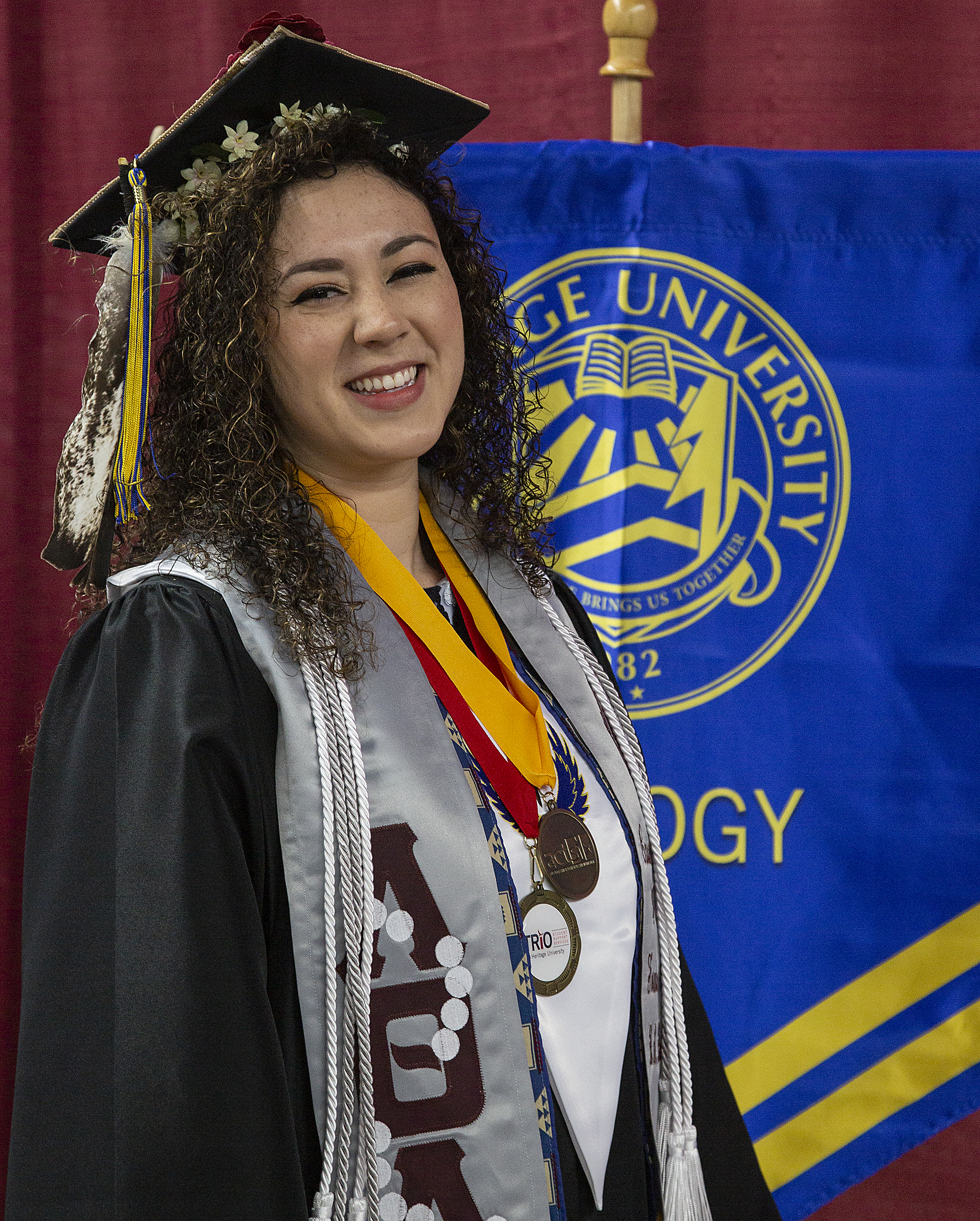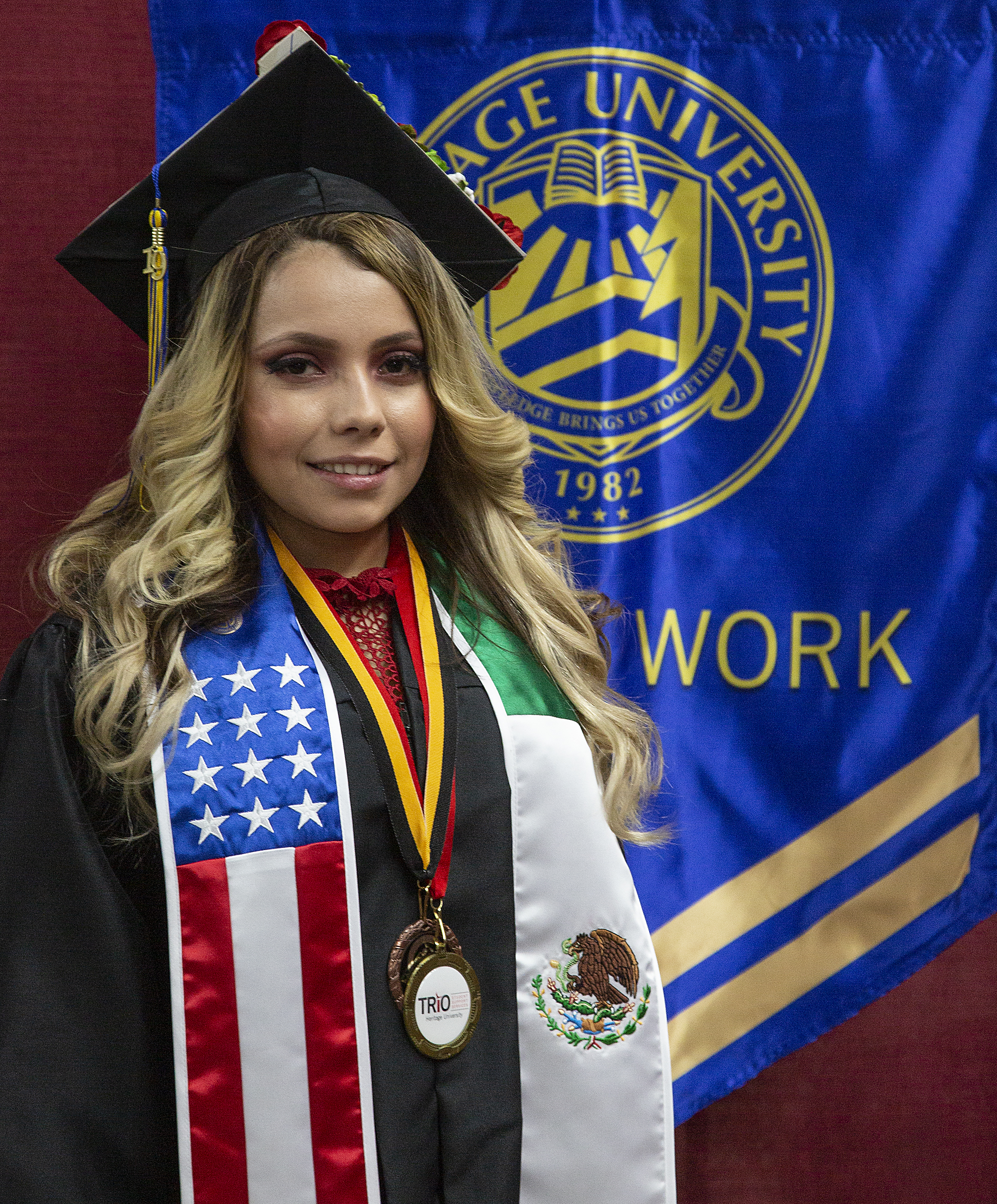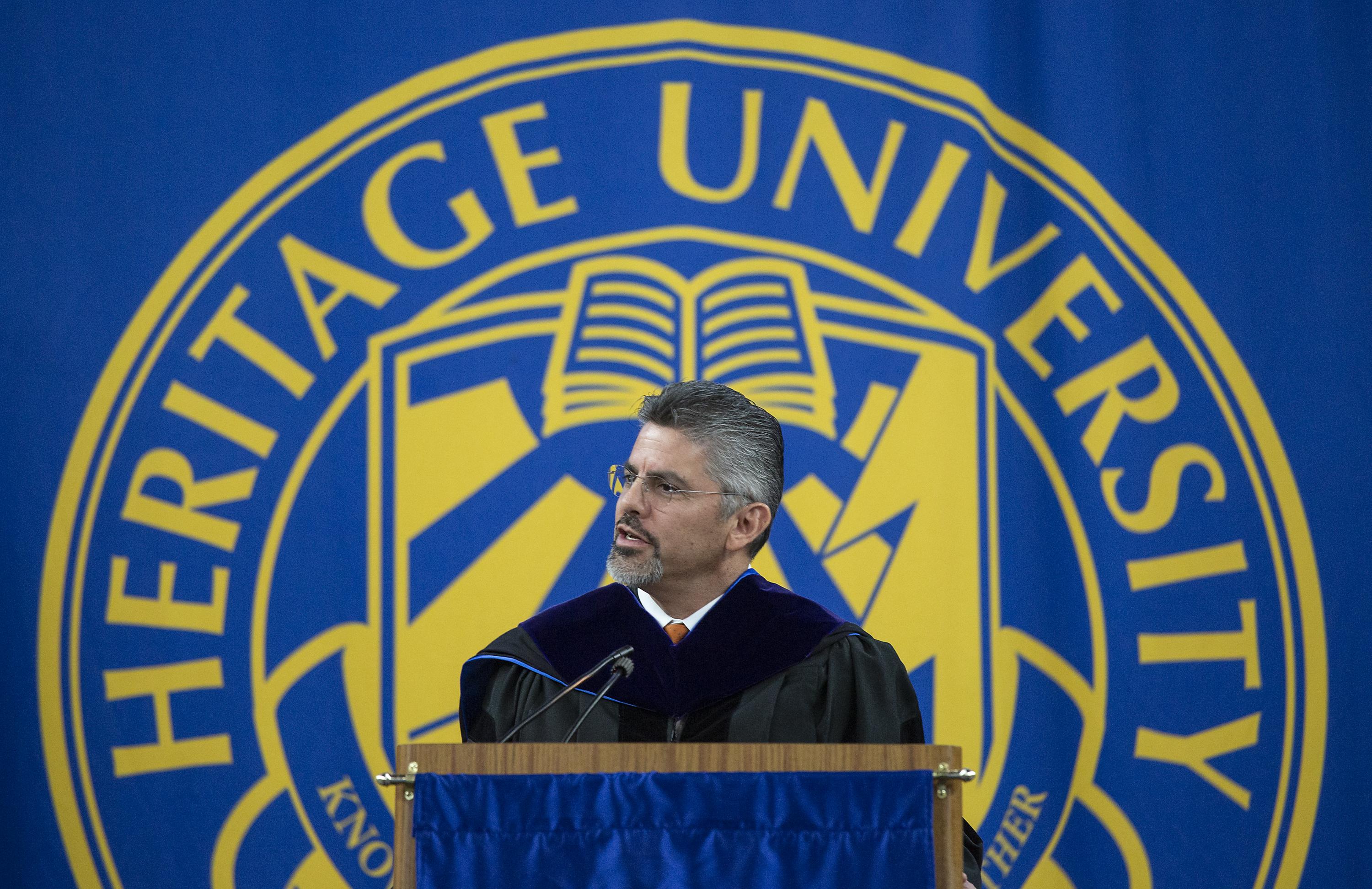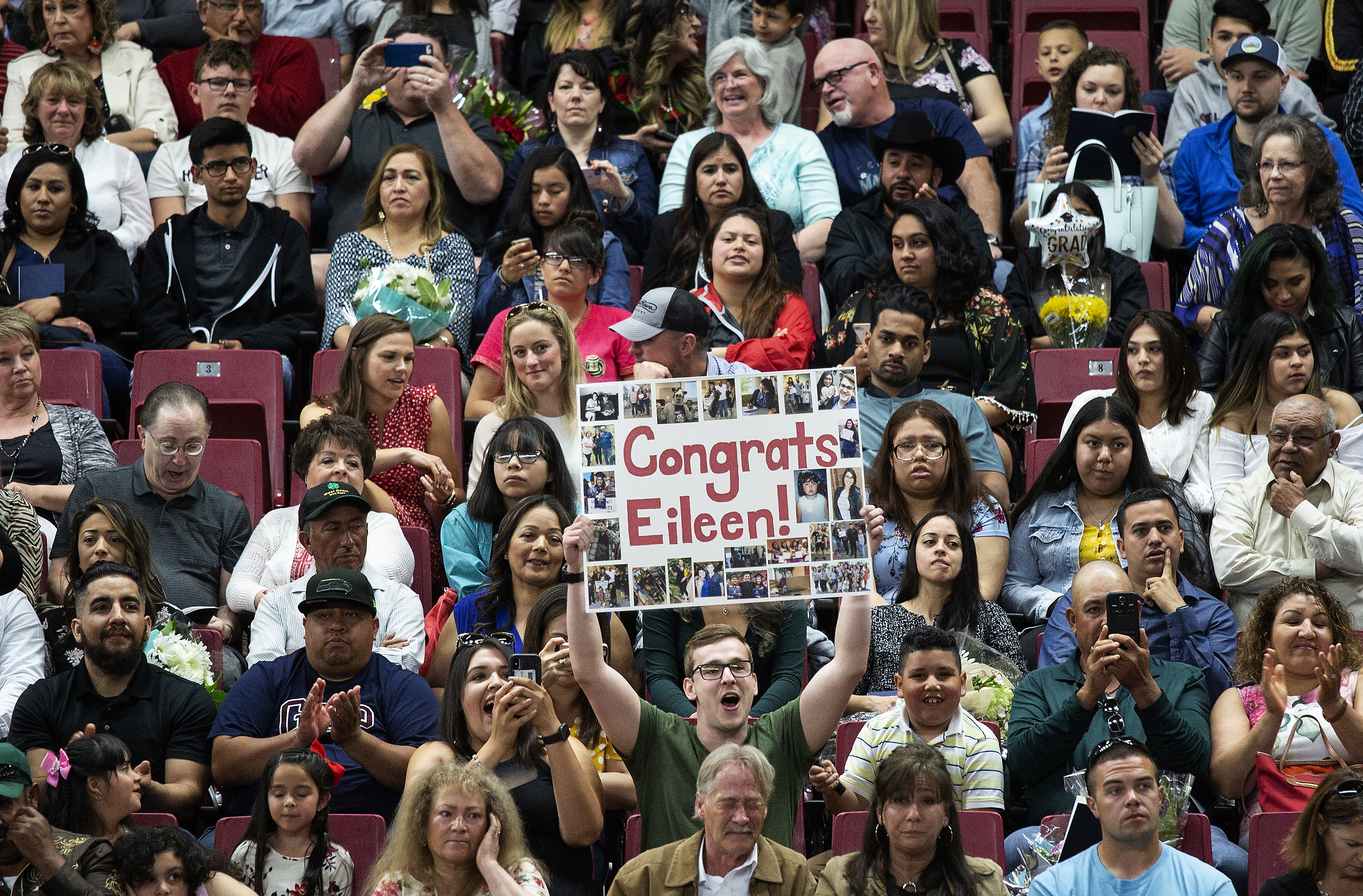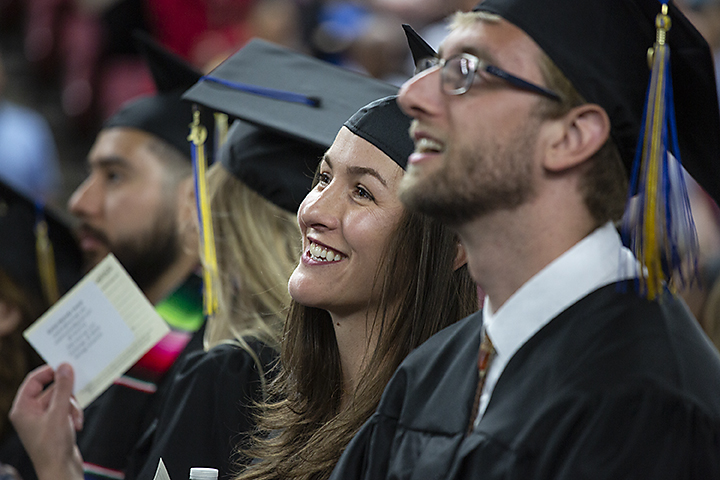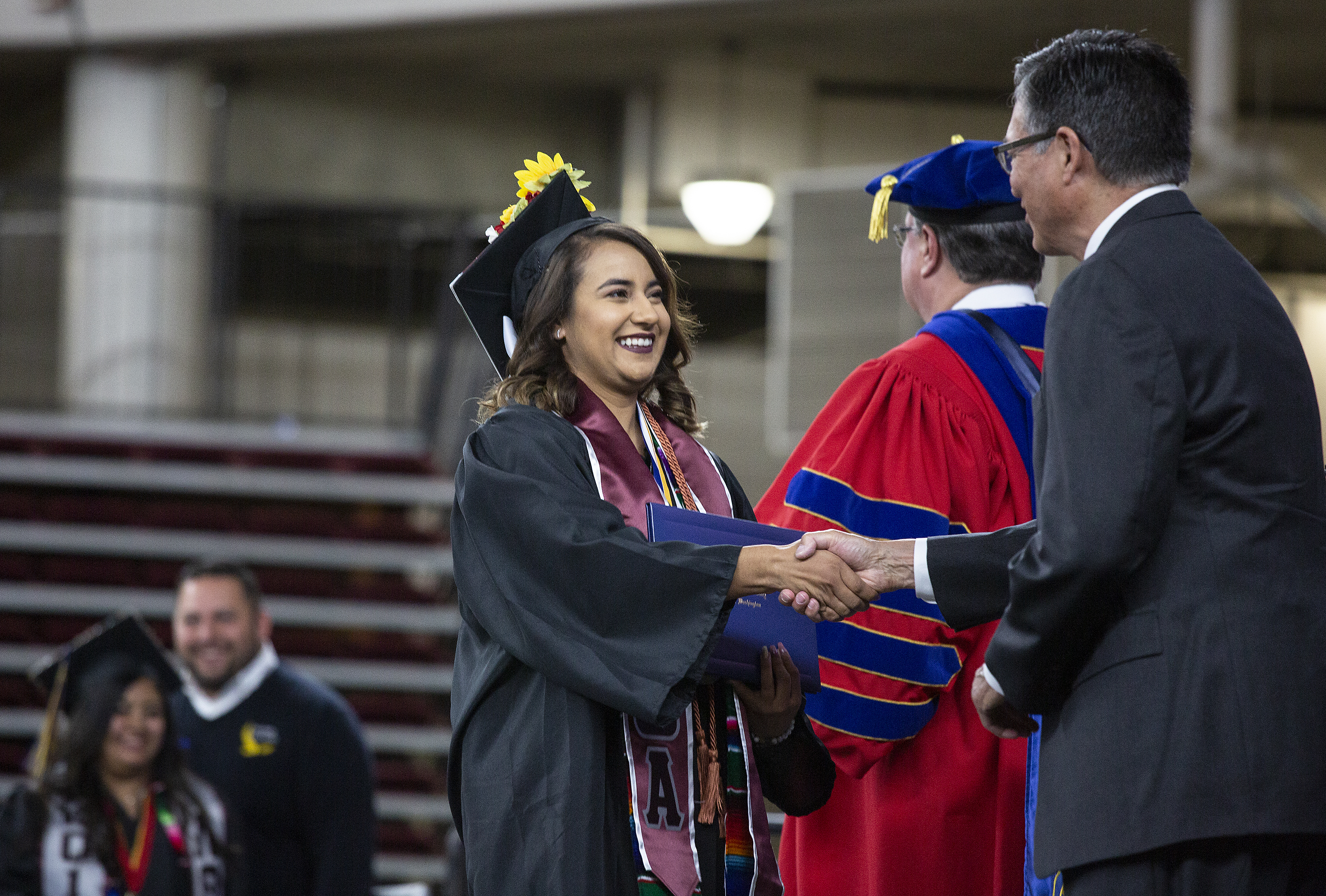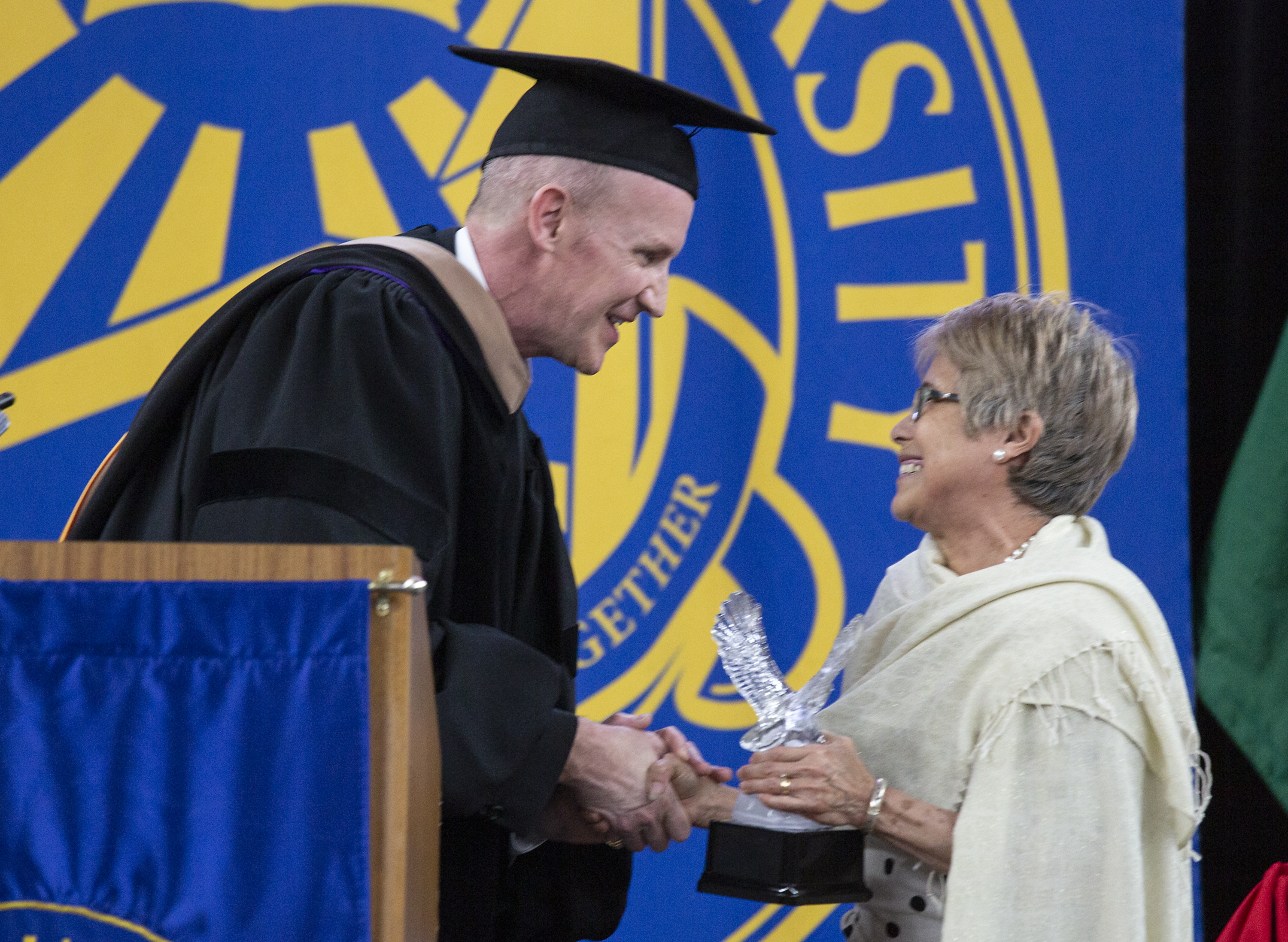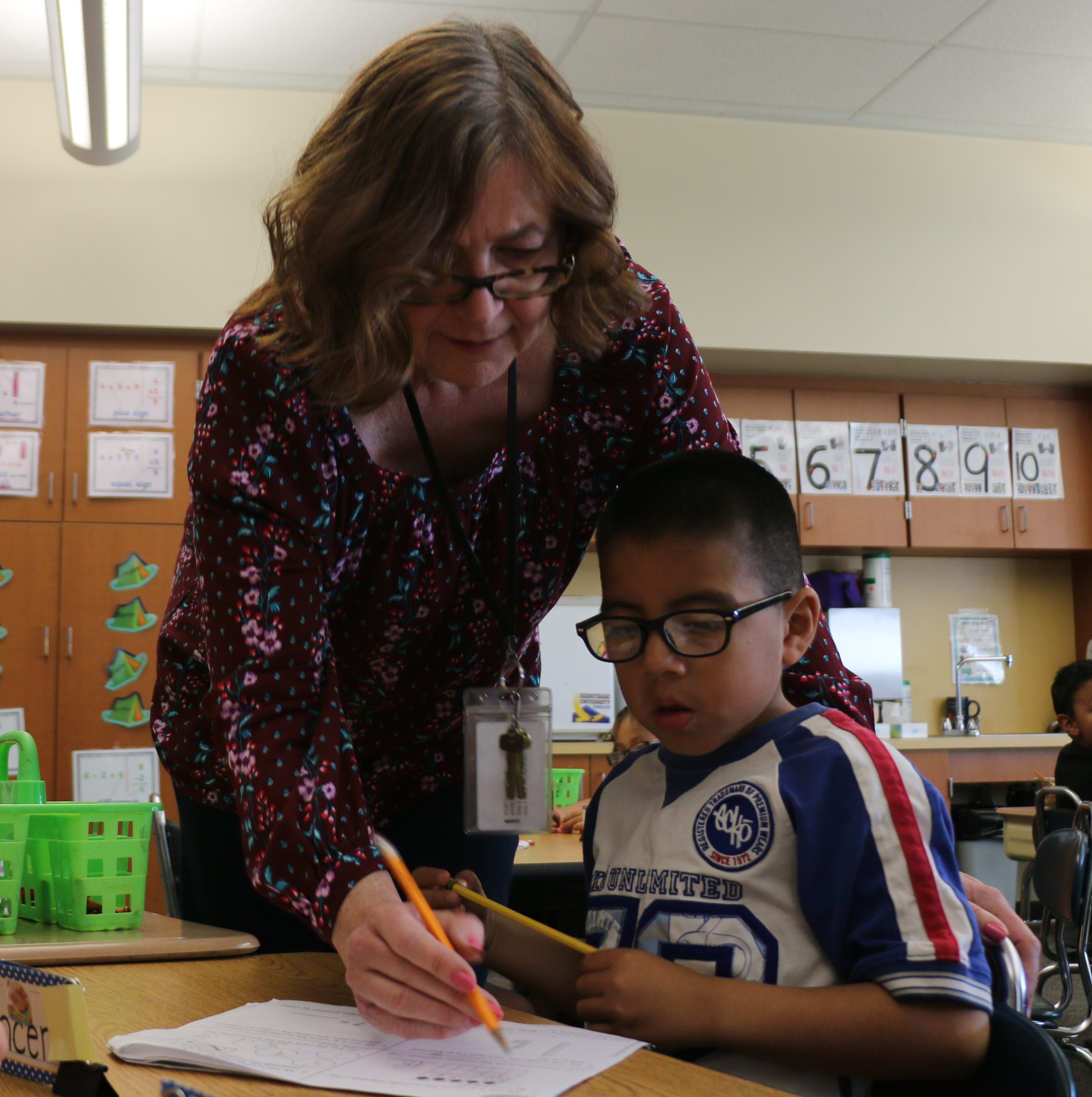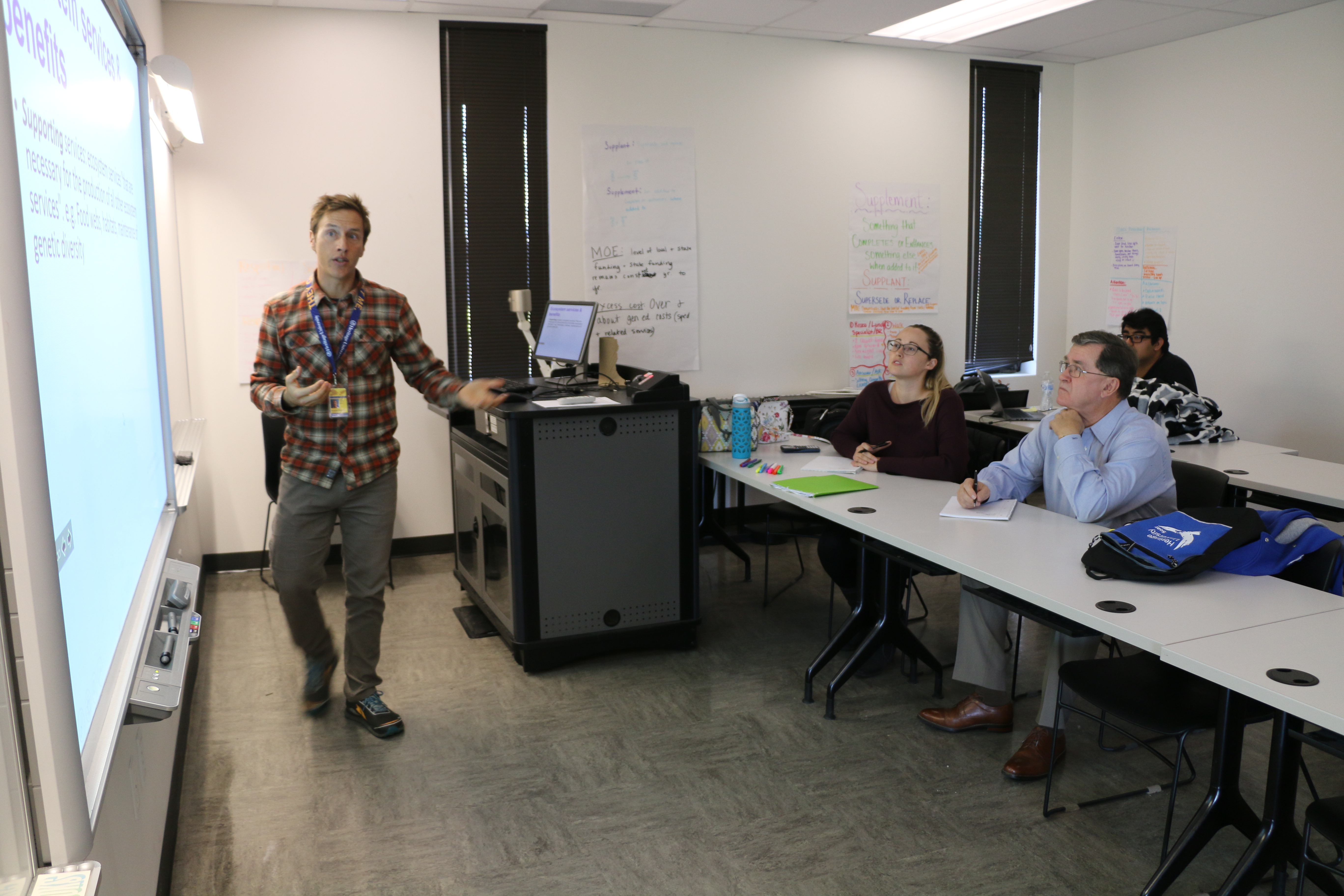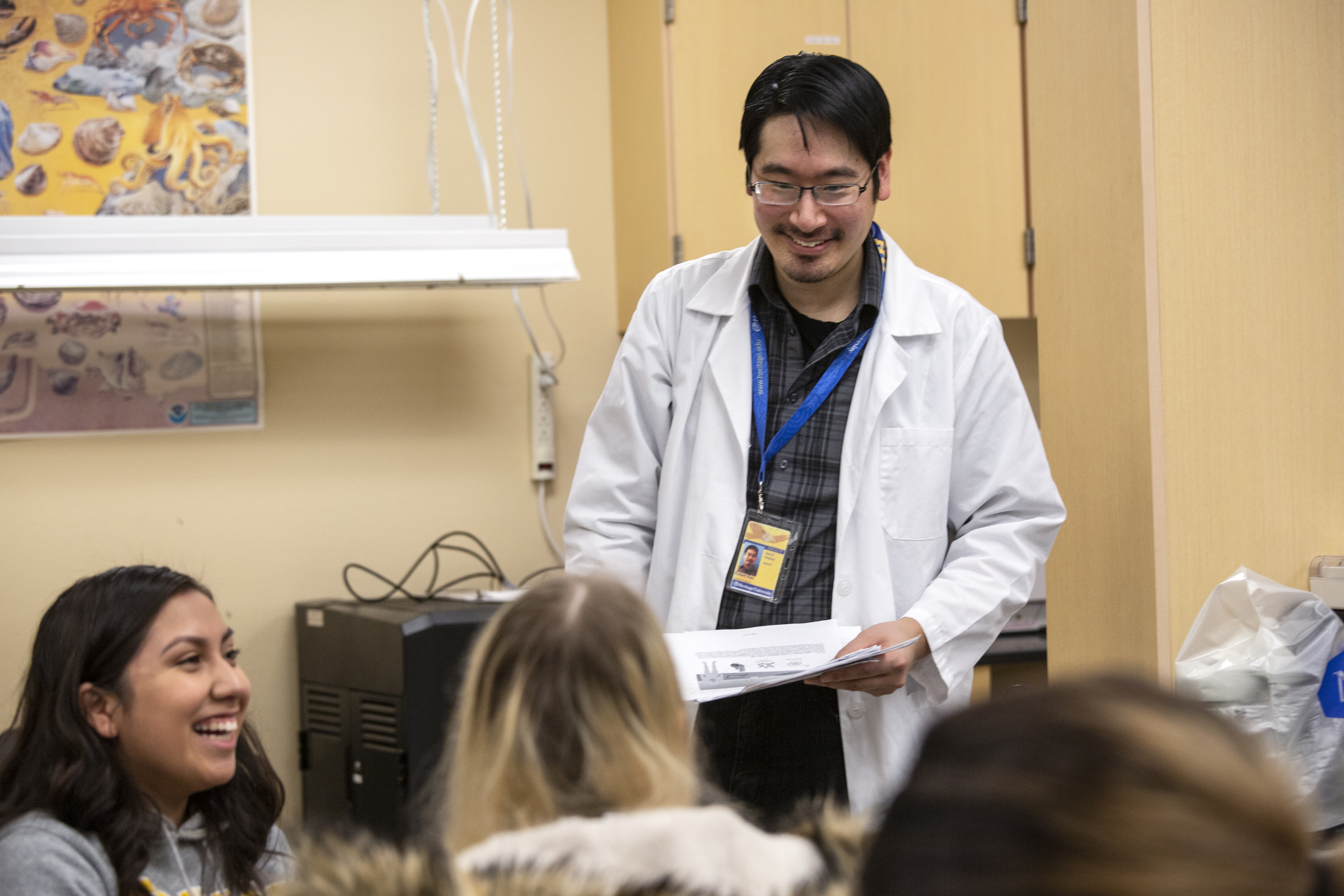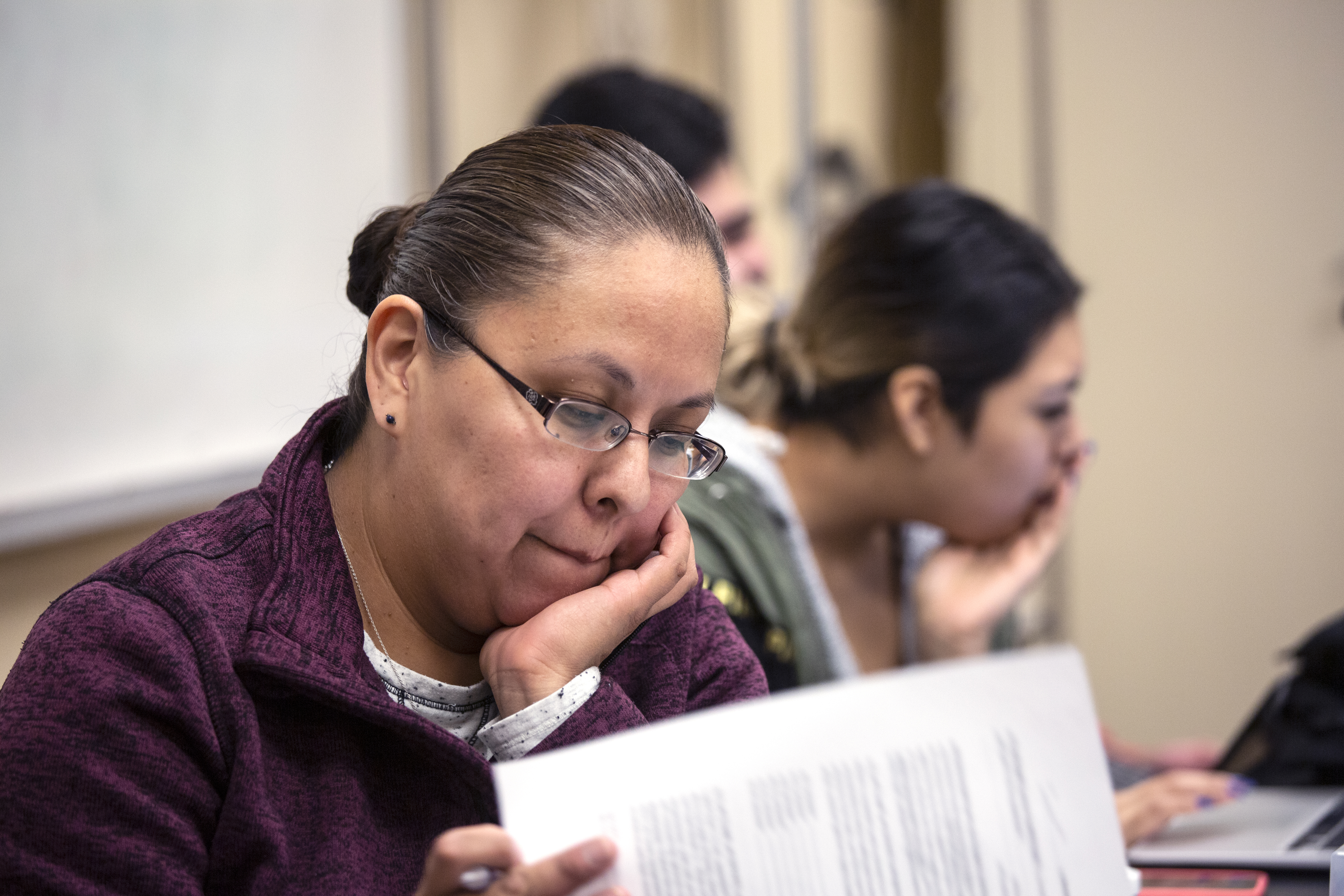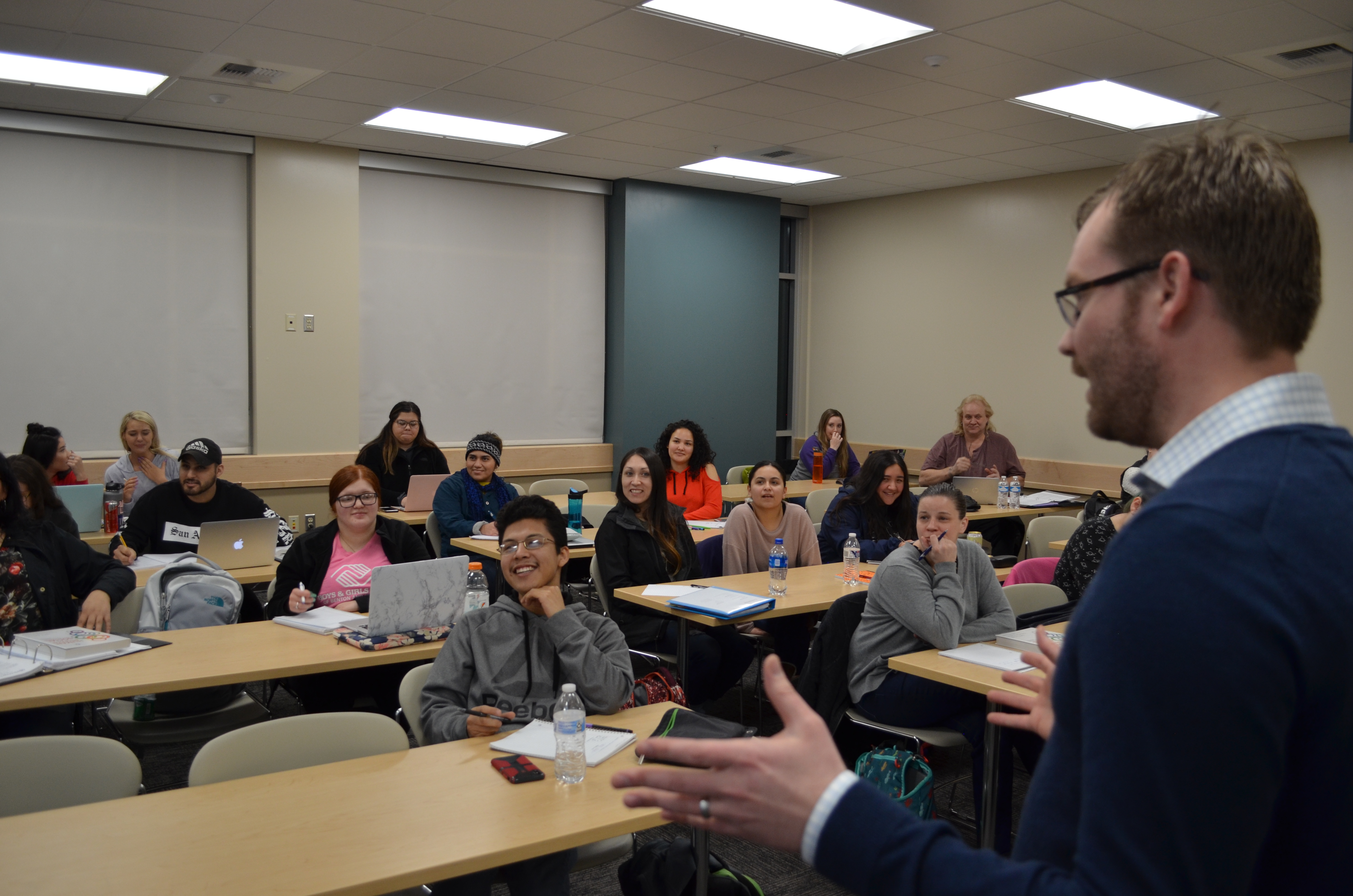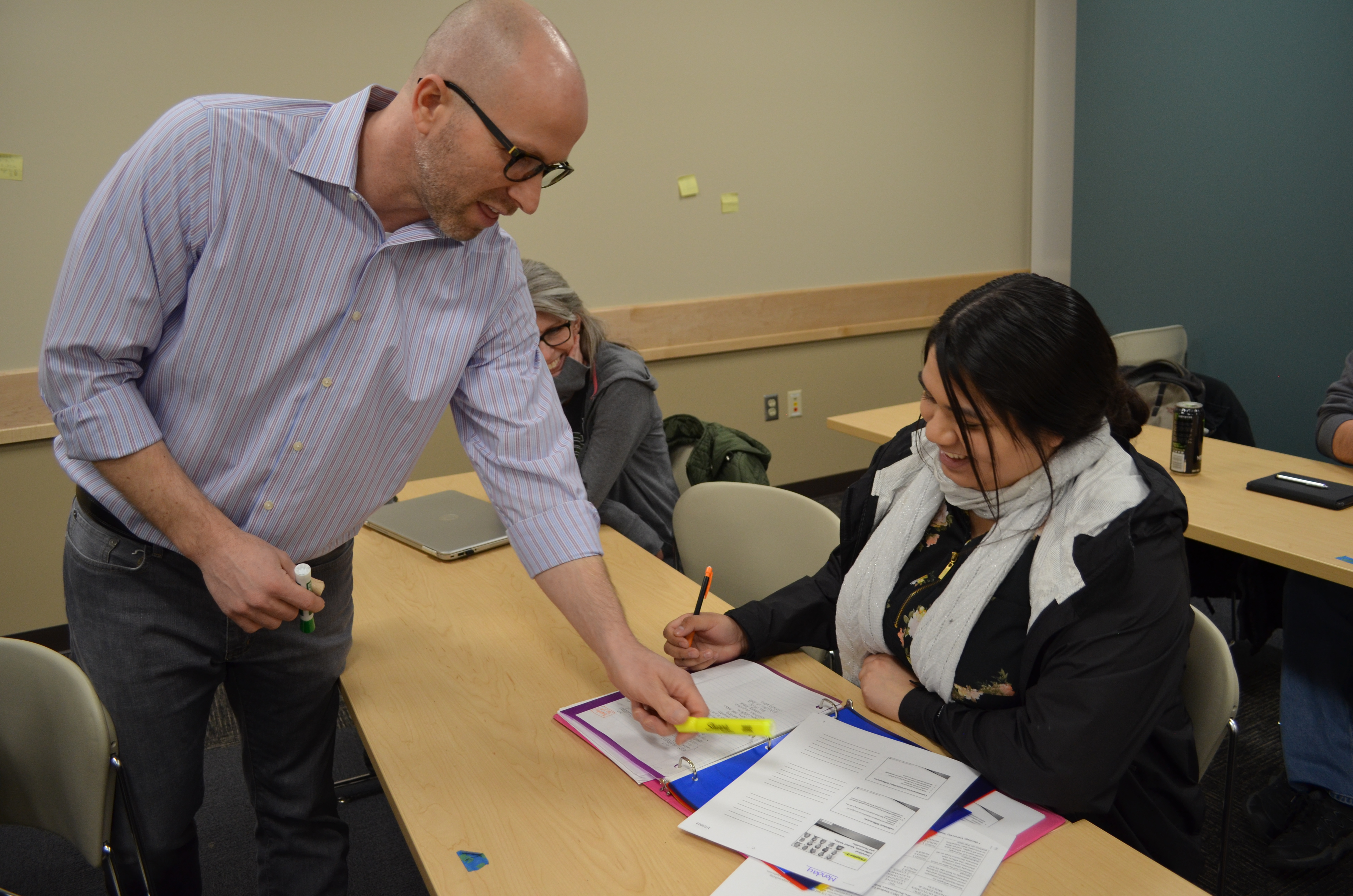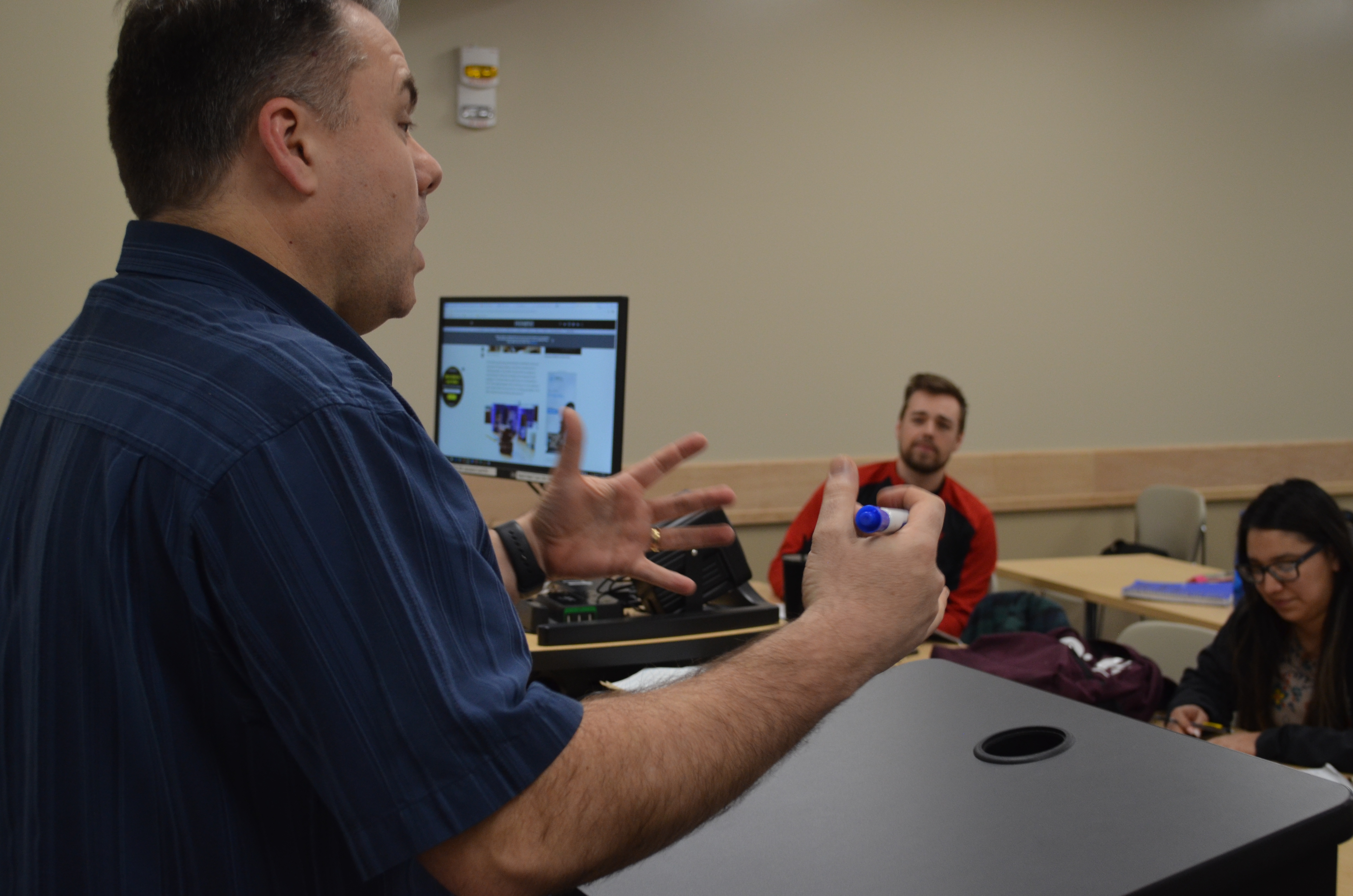All Nations Student Powwow
The gloom of an early spring storm couldn’t keep away serious powwow dancers and singers who came out for Heritage’s 3rd annual All Nations Student Powwow in April. More than 500 people came to the campus for the one-day event, which featured drumming, singing and dance competitions, as well as storytelling, a stick game and wápaas (basket) weaving demonstrations. And of course, vendors selling everything from Indian fry bread tacos to hand-crafted jewelry to blankets and t-shirts filled the grounds.

This is the third year that Silas Martinez has competed at the Heritage powwow. Here he is dancing in the boys junior traditional competition.
The powwow is hosted by the university’s two Native American student organizations, the American Indigenous Business Leaders of Heritage University (AIBL) and the Heritage University Native American Club (HUNAC). Student volunteers plan, organize and host the event.
“The powwow affirms our community’s place on our campus. We can celebrate our culture while also sharing it with our larger Central Washington community,” said Keegan Livermore, HUNAC president and powwow organizer.
Dancers of all ages competed in men’s and women’s traditional, fancy, grass and jingle dance competitions—from tiny tots (children who are under five years old) to adults over 55. Kids 17 and under competed in the Stan Strong Special, which was hosted to bring awareness to suicide prevention. During one particularly meaningful special dance, a crowd of men, women and children — some in regalia and some in street clothes — danced around three featureless mannequins dressed in red. The REDgalia blanket dance raised money and awareness of missing and murdered indigenous women in the Yakima Valley and beyond.
The drum group Chute #8 served as head drum for the powwow. Heritage University board member and long-time supporter Arlen Washines, deputy director for Yakama Nation Human Services, was the master of ceremonies for the third year running. Karen Umtuch was the whip woman for the second year in a row. Caseymac Wallahee served as the arena director. Toppenish Longhouse catered the evening meal. The event was sponsored by Yakama Legends Hotel and the CIA Recruiting Program.


